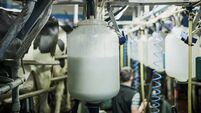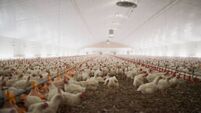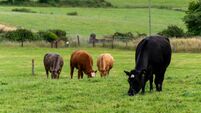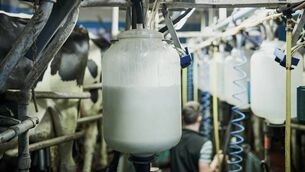As the cost of natural gas soars and greenhouse temperatures fall, food prices will rise

Tomato plants growing in a commercial greenhouse
Higher prices and shortages are likely for fruit and vegetables and other produce from the glasshouses of Europe, where the heat has been turned down because of the steep inflation in natural gas prices.
In particular, the supply of these crops is likely to fall from the Netherlands, where an estimated 2.4 billion cubic meters of natural gas a year (about 8% of the country’s consumption of the fuel) is needed to heat 25,000 acres of high-yielding glasshouses, which help to make the country the world’s second-largest exporter of food, by value.
As European gas prices increased 985% year-on-year, to a record high level in December, Dutch glasshouse owners turned down the heat needed to grow crops such as tomatoes, cucumbers, bell peppers, and flowers.
Meanwhile, many British glasshouse growers didn’t go ahead with their normal January crop plantings, because of high gas prices, and the lack of workers.
At the other side of Europe, there are reports that about 70% of all Bulgarian greenhouses for vegetable production didn’t produce crops this winter due to high gas prices, leading to a lack of home-produced tomatoes and cucumbers on their domestic market.
Greenhouse owners in some other EU countries have depended on state aid to continue production.
However, reduced supply from the Netherlands is significant, because it is one of Europe’s key suppliers of fresh produce.
Dutch growers are reacting to runaway gas prices by trying to save money wherever they can, often by leaving greenhouses standing empty. With inflated energy prices accounting for 26% of their total costs, they have postponed planting or switched to less energy-intensive crops, since natural gas prices started to rise in April 2021.
A large portion of gas supplies for Dutch glasshouses is purchased at spot prices. For others, as their energy contracts for the glasshouses expire, exposing them to much higher prices, more producers decide to cut back production. If they persevere with production at high gas prices, they run the risk of their produce becoming too expensive and being replaced in shops by cheaper, imported produce.
There is also the risk of cold, harsh weather depleting the meagre gas reserves in the Netherlands.
Dutch exports of greenhouse produce were estimated at €9.2 billion in 2020.
But growers have been cutting back since last autumn due to high gas prices, with some leaving greenhouses empty, and bankers at ABN AMRO have predicted that higher costs of feed, fertiliser and energy will hamper Dutch agricultural growth this year, with volumes in ornamental crops and glasshouse vegetables dropping significantly.
Huge Dutch greenhouses are running at only 50% to 80% of usual heat input, projected to reduce crop output by about 10%.
Across the English Channel, 60-70% of growers haven’t done their usual January planting in Hertfordshire’s Lea Valley, which has 370 acres of glasshouses and is known as London's Salad Bowl.
They produce about 75% of Britain’s cucumbers, sweet peppers, and aubergines, but they say the high gas price and the lack of workers made it too much of a gamble to plant in January.
A spokesperson said leaving the greenhouse empty also costs money, but they would probably lose more money if they plant.
They said retailers don’t want to pay higher prices for fresh produce, preferring to import from abroad, with the cheapest produce likely to come from Morocco.
Even Spanish producers using heated glasshouses have cut back, and Morocco has been exporting more to Britain than Spain recently.
Even if gas was affordable for heated production, not enough workers can be found in Britain to grow or harvest crops, because Brexit stopped the free movement of workers. If Lea Valley growers plant a crop this year, it will only be after April, and they will finish before September. This rules out growing tomatoes or peppers.
So British retailers may have to rely on increased imports but may find the supply of those reduced because EU growers can’t handle the high heating costs.
Already, wholesale prices of salad crops and vegetables grown in Spain have risen due to early January crop damage by Storm Filomena, which brought unprecedented snowfall and freezing temperatures to Spain and Portugal.
According to the Mintec food industry market intelligence company, prices jumped more than 75% for courgette and 30% for green peppers, and 10-12% for lettuces and cabbages.
Such price rises could be a regular feature in the European fruit and vegetable market for much of the year, particularly in the UK.










